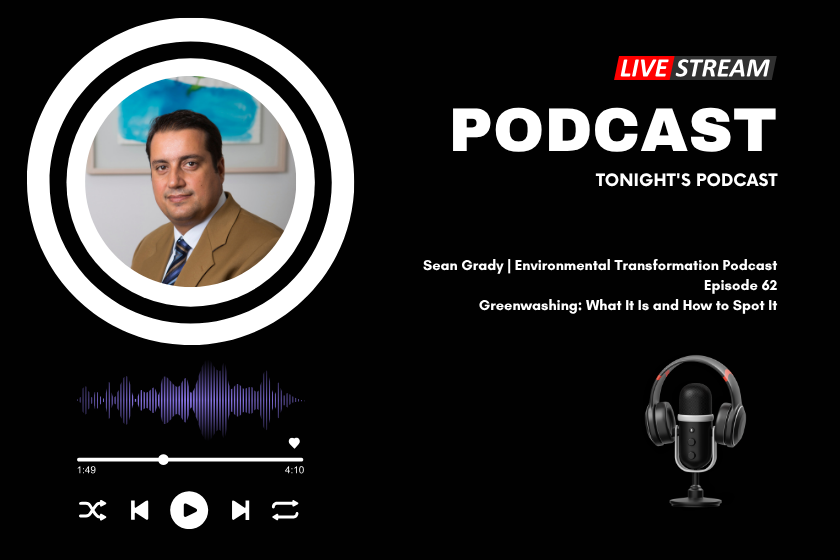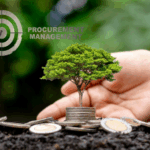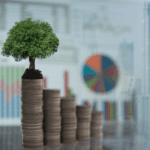Greenwashing and ESG reporting are under intense scrutiny as investors and regulators demand more transparency. In this interview, sustainability expert Nikos Avlonas explains how companies mislead, the risks they face, and how to report ESG data responsibly.
Interview: Nikos Avlonas on the Truth About Greenwashing
Host: Sean Grady, Environmental Transformation Podcast
Guest: Nikos Avlonas, President of the Centre for Sustainability and Excellence (CSE)
Sean Grady: Nikos, it’s a pleasure to have you back on the show. Let’s start with a refresher—tell our new listeners a bit about your background.
Nikos Avlonas: Thank you, Sean. I’m the founder and president of the Centre for Sustainability and Excellence. We’re global leaders in training C-suite executives and sustainability professionals. To date, we’ve trained over 8,000 professionals across 90 countries—including 90% of Fortune 500 firms. We also advise organizations on ESG strategy and reporting and conduct research on ESG trends, particularly in North America.
Understanding Greenwashing
Grady: Our main topic today is greenwashing. For those less familiar, what exactly is greenwashing?
Avlonas: Simply put, greenwashing is the act of misleading stakeholders—consumers, investors, even regulators—about the environmental performance of a company or product. It’s about presenting something as “green” when it’s not. And unfortunately, it’s widespread.
Grady: So it’s essentially marketing false sustainability claims?
Avlonas: Exactly. It can be as simple as using eco-friendly language on packaging without proof, or as complex as publishing sustainability reports that exaggerate performance. Take ExxonMobil, for example—they were labeled a climate leader in certain rankings, yet only 17% of their investments went toward renewable energy. That’s greenwashing.
Greenwashing in Action
Grady: What about consumer brands? Any notable examples?
Avlonas: Unilever is a case in point. While publicly supporting anti-plastic initiatives, it was revealed by Reuters to be lobbying in developing countries to allow single-use plastics. That’s a direct contradiction—classic greenwashing.
Grady: So companies say one thing publicly and do the opposite behind the scenes.
Avlonas: Exactly. And sometimes, it’s not even the company itself—it’s the marketing agencies or PR teams exaggerating green claims without factual basis.
Intentional vs. Unintentional Greenwashing
Grady: Are companies always doing this deliberately?
Avlonas: Not always. There’s both intentional and unintentional greenwashing. The unintentional version often stems from ignorance—companies may not understand the full scope of what “sustainable” really means. But when it comes to reporting false ESG metrics or hiding behind vague sustainability labels, that’s deliberate. And it’s dangerous.
The Role of Leadership and Data Integrity
Grady: Who’s responsible for ensuring accurate ESG disclosures?
Avlonas: The CEO. Ultimately, it’s the CEO’s responsibility to ensure that sustainability claims are accurate and based on verified data. Even if they delegate reporting, they are accountable.
Grady: And when this goes wrong?
Avlonas: The reputational and financial risks are enormous. Walmart and Kohl’s were both recently fined millions by the FTC for misleading claims. But the biggest impact is on investor trust.
Investment Risk and Regulation
Grady: Let’s talk about investors. How does greenwashing affect them?
Avlonas: It’s huge. If investors feel misled, they’ll pull out. That’s why the EU introduced the Sustainable Finance Disclosure Regulation (SFDR), requiring financial firms to classify investments as truly green—or not. This prevents funds from claiming green status without solid basis.
Grady: Are similar regulations coming to other regions?
Avlonas: Asia-Pacific countries are already adopting EU-like rules. Canada has its own carbon tax model, and we’re seeing early signals from the U.S. as well, though enforcement is still lagging.
Spotting Greenwashing as a Consumer
Grady: What about consumers? How can they identify greenwashing?
Avlonas: It starts with education. If you’re equipped with basic sustainability knowledge, you can spot misleading claims quickly. For example, many electric vehicle brands present themselves as green—but unless the car is produced using renewable energy and charged from clean sources, it’s not inherently green.
Grady: So even EVs can be greenwashed?
Avlonas: Absolutely. The production footprint matters. It’s about life-cycle analysis, not just tailpipe emissions.
Technology, Reporting and the Path Forward
Grady: What are the biggest technical challenges for companies trying to report ESG data accurately?
Avlonas: Data tracking and verification. Many companies still lack robust systems to collect and validate sustainability data. There’s no universal platform, so it’s fragmented. That opens the door to unintentional mistakes—or intentional manipulation.
Grady: Where do you see solutions emerging?
Avlonas: ESG ratings and third-party audits are key. Investors increasingly rely on ESG scores from independent agencies like MSCI or Sustainalytics. Some are also using AI-powered platforms or ESG-screening apps to assess investment risks.
What CSE Is Doing to Help
Grady: What role does CSE play in this landscape?
Avlonas: We educate and certify thousands of professionals worldwide. We work directly with companies to improve the accuracy of their ESG reporting and help marketing and communications teams avoid greenwashing. We also offer tools like the ESG Assessment Framework to evaluate risk areas and improve transparency.
Final Thoughts
Grady: Last question—what’s the one thing you want companies to remember?
Avlonas: Don’t underestimate the power of transparency. Greenwashing may offer short-term image gains, but it carries long-term reputational and financial risks. It’s always better to be honest and improve gradually than to fake progress.
Grady: Well said. Thank you, Nikos. Always insightful.
Avlonas: Thank you, Sean. It’s been a pleasure.









